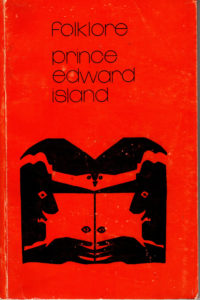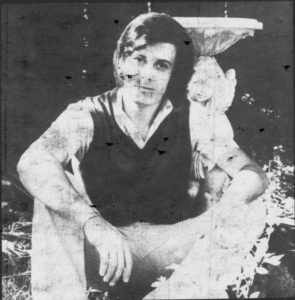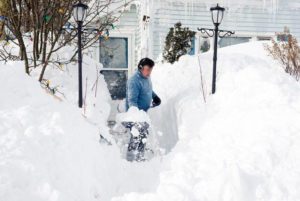My bibliographic search for more information about the Hollow River Cipher led to Sterling Ramsay’s (1973) “Folklore: Prince Edward Island”.
It’s a nice little book, that tries to enjoy local folkloric tales of ghosts, spirits and buried treasure from Prince Edward Island without the intrusion of too much critical thinking, a tradition that has (apparently) continued to the present day with the PEI Ghosthunter’s Society.
As to the author, there’s a picture (presumably) of Sterling Ramsay circa 1973 on the back cover, though inverted and coloured orange. A few minutes with GIMP produced the following reconstruction:
Does Ramsay have anything more to say about the Hollow River story that the Prince Edward Island Magazine didn’t back in 1900?
The answer is… not a lot, but that’s perhaps to be expected. What we do learn is that (p.61):
Many years went by until the original parchment note fell into the hands of a Mr. Donald MacDougall who came originally from the Brackley area of the island. To say that he became intrigued with the note would be quite an understatement, for, according to various accounts, he became almost obsessed with the desire to decipher the note’s hidden message. He spent every free moment arranging in various forms the jumbled letters with the hope of finding some clue to their meaning, but all in vain. This in itself was not enough to discourage him however. He showed it to every person whom he considered as likely of obtaining an idea of its contents. But all without success, none could understand any part of it but that which he could plainly see for himself, that is, what appeared to be a date, the 10th day of a month, A.D., 1738. At length he began to suspect that he was merely being made the butt of some seaman’s cruel joke, so his interest soon waned and for the moment, at least, all thoughts of the mysterious message fled from his mind. This was not to be very long lived, however, as he was soon to discover.
Who Was Donald MacDougall?
A quick Internet search revealed several mid-19th century Donald MacDougalls on Prince Edward Island, all descendants of a (presumably too early?) Donald MacDougall:
1. born on 24th December 1847 in Grand River, Prince, Prince Edward Island, son of James MacDougall (b. 1789) and Margaret Plaisted. Donald MacDougall married a Mary Gillis on 27 Nov 1866.
2. born on 24th January 1842 to Roderick MacDougall (b. 1812) and Mary MacKinnon.
3. born on 5th November 1844 to Jonathan MacDougall (b. 1813) and Anne MacNeil.
4. born on 20th August 1850 in Grand River, Prince, Prince Edward Island to Michael MacDougall (b. 1818 in Grand River, Prince, Prince Edward Island) and Anne Gillis (died 22nd May 1902). He died on 4th May 1929 in Grand River, Prince, Prince Edward Island.
The “various accounts” mentioned by Sterling Ramsay are probably different family retellings of the same basic story, handed down a couple of generations. (There’s nothing like a bit of elusive pirate treasure talk around a family hearth, right?)
Sterling Ramsay
Is Sterling Ramsay still alive? There’s a picture of a Sterling Ramsay of Charlottetown shovelling snow in 2015 in a local PEI newspaper:
And, in a timely coincidence, it seems likely to me that this is probably the same Sterling Ramsay who elaborately decorates his house on Euston Street every Halloween to scare local children: though sadly the local Guardian’s online archive seems to have lost the pictures of him with the Grim Reaper and shaking hands with the Devil. But I’m sure you get the basic idea. 🙂
From collecting folkloric ghost stories to improvised Halloween house-theatre, it seems like there could easily be a consistent thread of interest weaving through his life, wouldn’t you say, hmmm? 😉



Nick: In my past efforts to help with your unlikely quest to trace Eagle, I found quite few that either failed the history test or turned out to have one mast too many. As a matter of subjective interest only, I did come up with a Canadian flagged Eagle, a freighter that went down at almost the very location of your pirate sloop’s last landfall, North Cape, Prince Edward Island. That’s my dedication to lost causes for you. The year being 1922, just 186 years too late by my calculations.